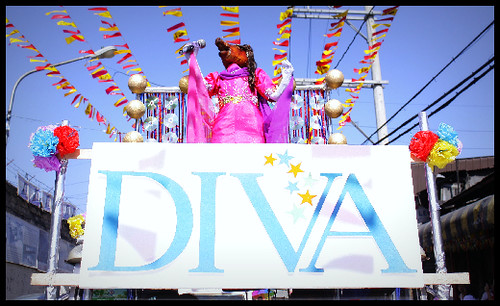There is a man named Dennis who, for a living, drives a red tricycle in the island of Guimaras, located in the bigger island of Visayas. I met him when I rather clumsily disembarked at Jordan Wharf. There, a crowd of barking drivers — of tricycles and “multi-cabs” (public utility jeeps, really, each of which can fit a maximum of fourteen people) — cordially harassed us pump boat passengers; they roared in Ilonggo, announcing ridiculous rates, and pointed their greasy index fingers at their luxury tin vehicles. They must have seen us as prospects right from the start of our eleven-peso ride, which, if you board at any of the ports on the southeastern edge of Iloilo City, takes ten to fifteen minutes, depending on the weather. Most things depend on the weather, it seems like.
The day was hot and humid and the sparkling waters were almost blinding. I was thus disposed to not have much patience for swindlers. Dennis, who must be in his early thirties, stood out because he had dutifully directed me to the tourism information desk where two young ladies both wearing yellow Survivor t-shirts and denim jeans made sure all visitors were given a warm welcome, and that no one overpriced fares. They had a price list. “You’re going to Enrico Beach, right?” one of them said. She was scanning the pages of her notebook. “Let’s see. If you take a multi-cab, a one-way trip should cost you no more than four hundred pesos.”
Needing less space, I opted instead for the tricycle and hired Dennis: five hundred pesos for five hours, to the beach and back, covering a total of not more than sixty kilometers, but with likely side tours, too, to any one of Guimaras’ caves, or any one of Guimaras’ waterfalls, or any one spot where one could take pictures and notes and admire the unspoiled economy of one of smallest islands in Western Visayas.
I first heard about Guimaras in 2006 when the Manila newspapers reported the worst oil spill in Philippine history. To me, the story had the impact of a footnote — evidence of my urban snobbishness. But the mess of that has since been cleaned up; its last ugly ripple has ebbed. Now, when the island province is brought up in conversation, the beaches are praised as being better than that of Boracay. The sand and soil have been ascribed adjectives in superlative form, such as “purest” and “most fertile,” respectively. The sweet mangoes are raved about, too, with Bill Clinton and the present Pope alleged to be two of its most famous eaters. “Plant a mango tree and send your child to college,” so went the motto of former Guimaras Governor Emily Relucio-Lopez (at least that's what she had been quoted as saying), and I wonder if there’s any other place in the world where tuition is appraised in the currency of tropical fruits – and beachfront hospitality, in US dollars.
“You’re heading the wrong direction,” Dennis told me coolly. He was sporting a childish moustache and the great laughable Asian goatee. “Alubihod is where the tourists go. I’m happy to take you to Enrico, but I haven’t even been there since high school.”
Three years ago, during which time Dennis was working in a bakeshop in Libis, Quezon City, his father died. So he left Manila and went back home. After the funeral, Dennis’ wife insisted that he stay on the island, or at least in Iloilo City. He did. He effectively put Manila behind by buying the tricycle, which he now rides to go wherever in Guimaras he wishes to go, be it to a passenger’s destination, an odd boredom-conceived adventure, or his house in the municipality of Buenavista.
At the start of our Guimaras tour, Dennis filled his vehicle up with four 1.5-liter Coke bottles of reddish unleaded gas; then he drove me to Daliran Cave. We descended a long autumnal staircase before landing on what looked like a set location for the next Indiana Jones movie, if there is going to be a next Indiana Jones movie. I hasten to add, however, that it was King Kong whom I half-expected to emerge furiously from the deep black shadows of the cave.
This piece would not have been about Dennis, but I lacked the material to talk at length about the pump boat captain, whose name is Ariel. He had enough quips, mind you, but the best thing I could remember from my sea-breeze conversation with him was that he had worked for Quezon City’s First District Representative Bingbong Crisologo. Ariel had helped build the congressman’s house. Unfortunately, I found it impossible to put a fashionable "The Talk of the Town" sort of spin on Ariel’s cement-slapping endeavors from the yesteryears.

